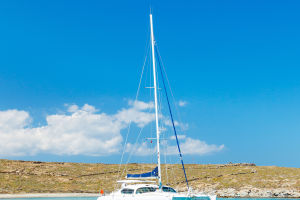A typhoon is a type of tropical cyclone. A tropical cyclone is a low-pressure vortex that occurs over tropical or subtropical oceans, and is a powerful and deep "tropical weather system".
Typhoons usually form in the tropics at sea 3-5 latitudes away from the equator on average, and their movements are mainly influenced by large-scale weather systems, etc. They eventually dissipate at sea, or degenerate into temperate cyclones, or dissipate after landfall.
In terms of classification, typhoons with winds of 12 or higher are divided into three classes, while hurricanes have more classes and a higher ceiling. Category 1 hurricanes are equivalent to typhoons or strong typhoons, Category 2 hurricanes are equivalent to strong typhoons, and Category 3 hurricanes are equivalent to strong typhoons or super typhoons.
So how do typhoons form?
An important mechanism for the formation and development of typhoons is the formation of typhoon warm cores.
The current consensus is that the warm core is formed by the convergence of a large number of moist air currents rising at low altitudes and the release of latent heat of condensation in the middle and upper levels, which heats up the air.
Scholar believe that the energy of typhoon warming is not mainly from the heating of latent heat of water vapor condensation in the convective clouds but from the adiabatic warming effect of the sinking between the clouds. One of the factual bases is that during the onset of typhoons, the typhoon center is often not in the convective cloud area but in the clear sky area outside the clouds.
Typhoon disasters are mainly caused before and after the typhoon makes landfall. The direct disasters caused by typhoons are usually caused by three aspects: gale-force winds, heavy rainfall, and storm surge.
1. Gale force winds
When a super typhoon comes, the wind and the huge waves caused by it can throw up coastal vessels and even break, and can also push huge ships inland; It is also enough to damage or even destroy buildings, bridges, vehicles, etc. on land. Especially in areas where buildings are not reinforced, causing more damage. High winds can also blow debris into mid-air and make it fly at high speed, endangering the lives and property of pedestrians and making the outdoor environment very dangerous.
2. Heavy rainfall
With a typhoon's landfall, the rainfall center can drop 100 to 300 mm, or even 500 to 800 mm of heavy rainfall in a day. Floods caused by typhoon rainstorms are fierce and destructive and are the most dangerous disasters.
3. Storm surge
When a typhoon moves to land, due to the strong wind and low pressure of the typhoon, the seawater piles up strongly in the direction of the coast, the tide level rises sharply, and the water waves press toward the coast like a mountain. If the storm surge meets with the high tide level of astronomical high tide, it can produce a high-frequency tide level, resulting in tidal overflow, seawall collapse, washing away houses and various construction facilities, flooding towns and farmlands, and causing a lot of casualties and property damage.
In addition, these disasters of typhoons are very likely to induce secondary disasters such as urban flooding, house collapses, flash floods, mudslides, etc.
So, the typhoon is very powerful, don't despise it!


